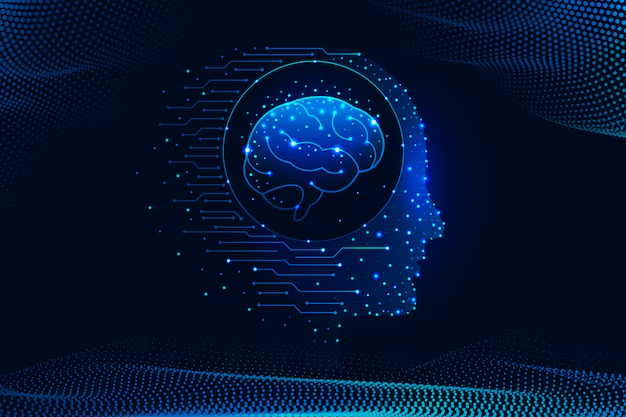Building an AI system requires a combination of strategic planning, technical knowledge, and the right tools. This process involves identifying clear goals, gathering and preparing high-quality data, and using machine learning models to deliver results that solve real-world problems. Here’s a step-by-step guide to
how to create an AI System, addressing common challenges, and integrating it into your business for optimal performance.
How to Build Artificial Intelligence
Understanding the Foundations of AI Development
To develop an AI system, you need three key components:
- Quality Data: High-quality, relevant data forms the backbone of any AI system. Whether sourced through APIs, web scraping, or internal databases, data needs to be clean and well-structured.
- Algorithms and Models: These range from simple decision trees to advanced neural networks, depending on the complexity of the problem.
- Robust Infrastructure: Scalable infrastructure, such as cloud platforms like AWS or Google Cloud, is critical for training and deploying AI models efficiently.
Additionally, expertise in machine learning, statistical analysis, and programming languages like Python or R is necessary to bring all these components together.

Step-by-Step Guide to Building AI Systems
1-Define the Problem and Goals
Begin by identifying the specific problem your AI system will address. Define measurable goals that align with your business objectives. For example, improving customer service response times or automating repetitive tasks.
Key considerations include:
- Feasibility: Can the problem be solved effectively using AI?
- Data Availability: Is sufficient, high-quality data accessible?
- Business Impact: What value will solving this problem bring?
2-Collection and AI Data Preparation
Gather relevant data from internal databases, public sources, or third-party providers. Once collected, prepare the data through cleaning and formatting to remove inconsistencies and outliers. Tools like Python’s Pandas or R’s dplyr are effective for this process.
Consider:
- Privacy Compliance: Adhere to data regulations like GDPR.
- Relevance: Focus on data directly tied to your problem.
- Balanced Volume: Avoid overloading your system with irrelevant data.
3-Choose the Right Tools and Platforms
Select tools and platforms that match your technical capabilities and project needs. For scalable solutions, consider cloud services like AWS, Google Cloud, or Azure.
Popular tools include:
- TensorFlow and PyTorch for deep learning.
- Keras for simplifying model building.
- Python for programming due to its extensive machine learning libraries.
4-Selection and AI Model Development
The heart of AI development lies in creating algorithms or using pre-built models. For complex problems, neural networks and deep learning frameworks like TensorFlow may be necessary. If efficiency is your goal, pre-trained models can be fine-tuned for your use case.
Key considerations:
- Model Accuracy vs. Speed: Highly accurate models may require more computational power and training time.
- Interpretability: Ensure you can explain your model’s decision-making process.
5-AI model Training
Training involves feeding the model data so it can learn patterns and improve performance. The dataset is typically split into training and validation sets.
During this stage:
- Address overfitting by balancing model complexity.
- Use tools like TensorFlow or PyTorch to streamline the process.
- Ensure sufficient computational resources, either through local servers or cloud platforms.
6-Evaluate the AI System
Test the system with unseen data to measure its performance. Use metrics like accuracy, precision-recall, and F1 scores to identify areas of improvement. Tools like Scikit-Learn can assist with model evaluation.
Key factors:
- Check for biases or underperformance in specific scenarios.
- Ensure the system performs reliably in real-world conditions.
7-Deploy the AI Solution
Deploying involves integrating the AI system into your workflows or applications. Whether through APIs or dedicated interfaces.
The deployment process must consider:
- Compatibility: The AI system should integrate seamlessly with existing tools.
- Scalability: Ensure it can handle increased data or usage over time.
- Monitoring: Implement performance tracking to identify errors quickly.
8-Monitor and Update Regularly
AI systems require ongoing monitoring to stay effective. As business needs and data patterns evolve, retraining and updating the model is essential. Tools like TensorFlow’s TensorBoard or Google Cloud Monitoring can aid in tracking performance.
Overcoming Challenges in AI Development
Developing AI systems comes with its own set of challenges:
- Data Quality: Insufficient or biased data can lead to poor performance.
- Overfitting/Underfitting: Balancing model complexity is crucial to avoid these issues.
- Technical Expertise: Skilled professionals in AI development can be hard to find.
- Scalability: Ensure your system can adapt to growing demands.
- Ethical Considerations: Avoid perpetuating biases and ensure user data privacy.
Integrating AI Into Your Business
For successful AI integration, focus on:
- Interoperability: The system should work seamlessly with your existing infrastructure.
- User Training: Train staff on how to use and benefit from the AI solution.
- Performance Metrics: Establish KPIs to measure the system’s impact on your business.
Hire a Software Systems AI Expert for custom artificial intelligence solutions.
By following these steps and addressing potential challenges, One can easily understand how to create an AI from scratch that drives innovation and enhance operational efficiency.

